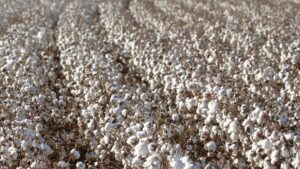Continued improvements in genetics, weed and insect control, seed treatments and Climate FieldView platforms.
Monsanto Company recently announced a record number of project advancements in its research and development (R&D) pipeline across the company’s five platforms: data science, plant breeding, plant biotechnology, crop protection and ag biologicals. Its subsidiary, the Climate Corporation, announced 17 R&D pipeline advancements including global expansion to deliver science-driven, digital agriculture innovations to farmers in Brazil, Canada and Europe.
“Farmers’ abilities to meet global food and fiber needs will continue to be constrained by land and water availability, and complicated by climate change, so we need to grow more crops, but we need to do it using less water and less energy,” says Dr. Robb Fraley, Monsanto’s executive vice president and chief technology officer. “Farmers will continue to fight off drought, yield-robbing weeds, destructive insects, and plant diseases while trying to optimize the unique opportunities in their fields. Our researchers’ early adoption of data science innovations, especially artificial intelligence and machine learning, will help farmers accomplish their goals to the benefit of the environment and consumers.”
Sam Eathington, chief science officer for The Climate Corporation, says their efforts combine machine learning, data analytics and predictive modeling “with the industry’s most robust seed genetic library and farm scale research, to identify the many variables that impact crop production. We are using cutting-edge science to invent unique digital tools that improve on-farm productivity and create value for farmers,” he adds.
Insects & diseases
Some key Monsanto R&D pipeline projects designed to help corn and soybean farmers combat threats include:
- Trecepta technology, advancing to launch in 2018, is designed to help farmers protect their corn plants from attacks by damaging insects including fall armyworm, corn earworm, corn borers and cutworms.
- NemaStrike technology, which is designed to protect corn, soybean and cotton crops from nematodes that attack plant roots and negatively impact harvests.
- The Soy BioNematicideproduct, also aimed at controlling nematodes, is being developed by The BioAg Alliance with Novozymes. It uses soil microbes to combat nematodes, now in Phase 3 development.
- The Climate Corporation’s disease diagnosis and identification technology, which uses artificial intelligence (AI) to identify and diagnose diseases in corn, soybeans and wheat in real time to help farmers move quickly to protect their crops during the growing season. This technology advances from development to the pre-commercial phase.
- New formulations and combinations of proven weed killers in products like Harness Max Acetochlor Premix, advancing to launch in 2018; Next Gen Dicamba Premix (Phase 2);and Acetochlor + Dicamba + 3rd mode of action Premix (Phase 1), which will eventually help farmers manage weeds that steal sunlight, water and nutrients from crops.
Genetics & seed treatments
In addition to anticipating and combatting threats to their crops, farmers seek to make the most of the land. Each square foot of soil represents potential for a bountiful harvest, and Monsanto’s research, from placing soil microbes on seeds to improving a plant’s output through selective breeding, seeks to help farmers maximize that potential. Examples of R&D pipeline projects that take this approach include:
- Corn BioYield 2, expected to be branded Acceleron B-360 ST upon regulatory approvals, which uses soil microbes as a seed coating to increase a plant’s ability to take up nutrients. Produced by The BioAg Alliance, this project advances to Phase 4 based on another year of strong performance in the field.
- Monsanto’s High-Density Corn System, advancing to launch in 2018, which uses conventional breeding to help corn seeds thrive when placed closer to each other in the field. Farmers can use this closer spacing to maximize the number of plants in each field to make the most out of their sunlight, water, and soil nutrients.
Agronomics: Variable rate fertility & seed
Key Climate Corporation R&D pipeline projects that aim to help farmers use resources more efficiently and apply farm inputs precisely include:
- The Climate Corporation’s nitrogen management technology which uses a combination of data sources to help farmers decide when and how much nitrogen to apply in order to help their crops thrive and reduce overuse, which can lead to runoff. Further, the company’s HydroBio irrigation management platform and advanced irrigation research analyzes crop irrigation data so farmers can more efficiently manage water use.
- The company’s advanced seed scripting tools, which enable farmers to combine multiple data sets, the farmer’s unique field data, combined with weather, soil and field research data, help deliver seed planting prescriptions that are tailored to specific genetics and their unique yield goals.
“Data-driven innovation is about more than producing higher yields,” says Eathington. “It’s also about helping farmers manage critical inputs like seed, fertilizer and water so they can get the most out of every acre in a more sustainable way.”
The world of agriculture is being transformed by data science, from algorithms and analytics to deep learning and artificial intelligence. In the face of climate change, advancements in these areas are helping farmers grow the food we need while using natural resources more efficiently.
“Monsanto’s plant breeders, climate scientists and soil microbiologists were among the industry’s earliest adopters of data science, artificial intelligence and machine learning, and for good reason,” says Anju Gupta, Monsanto’s information technology partnerships and outreach lead. “In the years I spent as a plant breeder and quantitative geneticist, my teams used predictive analytics to help us decide which products to advance, which ultimately led us to knowing the potential of every seed before it was even planted.”
Bayer merger and dicamba update
Along with R&D pipeline discussion, Monsanto briefly addressed both merger progress and Xtend trait and weed control system progress.
“We’re excited and energized about the new areas of scientific advancement we expect to unlock by combining with Bayer, to allow us to bring more products to farmers faster,” says Monsanto CTO Fraley. “The combination with Bayer will allow our two companies to accelerate the pace of innovation through our shared vision.”
The company expects the transaction to close in early 2018.
Regarding the Xtend system, Monsanto reports 97 percent weed control satisfaction among farmers who used XtendiMax herbicide with VaporGrip on RR2 Xtend soybeans, planted on 20 million acres in 2017.
Fraley reported that they expect Xtend soybean acreage to double in 2018 to 40 million acres in the U.S. He noted that 32 of 34 states are following the new EPA guidelines for dicamba use, with Minnesota expected to join that list soon. The company’s plan to improve customer success in 2018 include: enhanced training; distributing compliant spray nozzles at no cost; developing a spray app to help applicators with record keeping and to avoid problematic weather; establish a hotline for easy access on best practices; and offering additional incentives on residual herbicides and drift-reducing agents through its Roundup Ready Plus program, when using XtendiMax herbicide with VaporGrip technology.
Source: Corn and Soybean Digest













